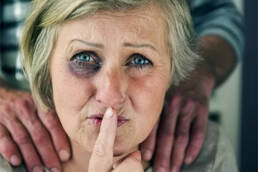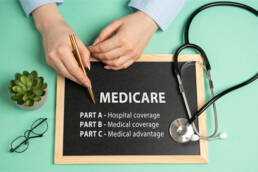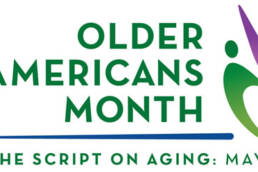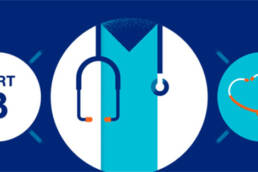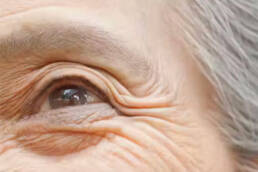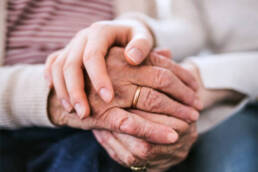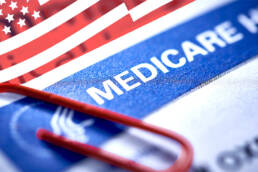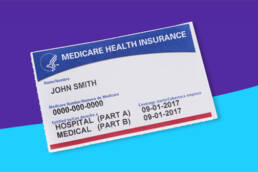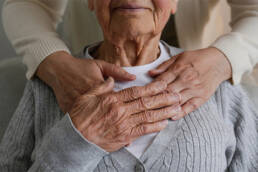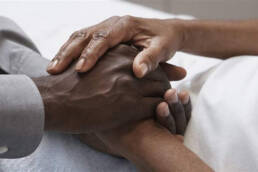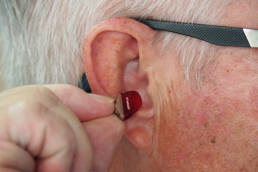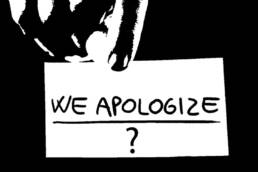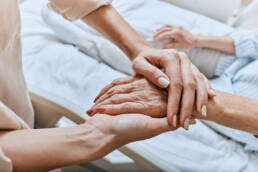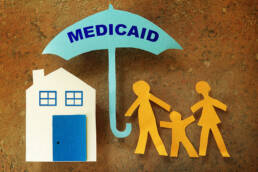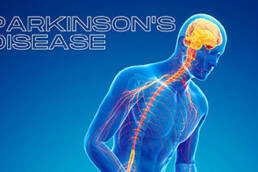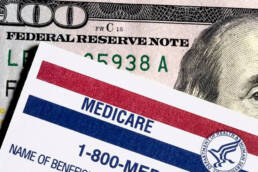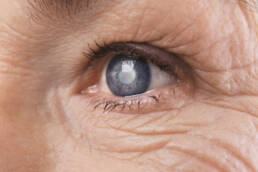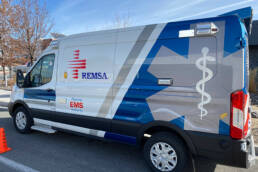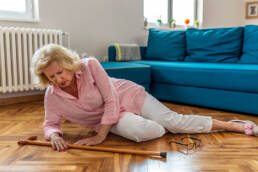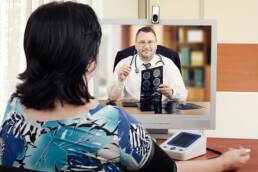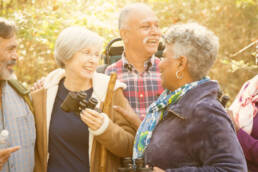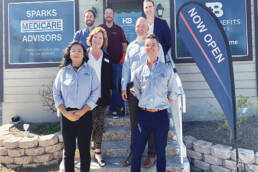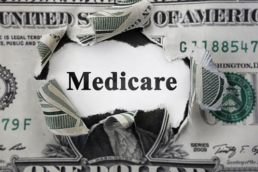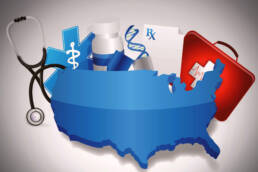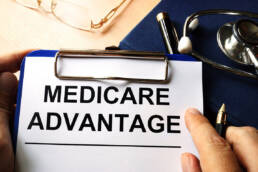PROPOSAL TO “SURVIVE AND THRIVE” UNDER THE MEDICAID ACCESS (80/20) RULE
Now that the Medicaid Access Rule has been approved and is on the horizon, the Personal Care Association of Nevada (PCAN) has developed a series of proposals to allow our state to survive while growing and improving the industry. These proposals will enable our state to function under the Medicaid Access Rule and significantly improve the access and quality of personal care services provided.
These proposals are intended to address the following areas:
- Creating career paths for caregivers.
- Development of safeguards for caregivers to ensure personal care attendants receive the benefits, protections, and support they are entitled to.
- Creating reimbursement tiers to address complex and hard-to-service clients.
- Creating a program to address personal care needs in rural areas.
- Creating a program to address the issue of socially isolated seniors and disabled care recipients.
- Creating a portal available to agencies, caregivers, care recipients, and other stakeholders to provide information on services and agencies.
- Personal care services (currently a part of medical facilities and other related entities) will be removed from the current NRS and developed into a new NRS for the personal care industry. This will allow flexibility, streamlining of operations, and the ability to design a chapter that addresses the needs of the personal care industry.
- Jump-start compliance with the Medicaid Access rule so we operate proactively instead of reactively as we work to change and create programs to become compliant.
Importantly, these proposals are cost-effective but also straightforward and practical to understand and implement. They have the potential to generate significant cost savings through reduced hospitalizations, improved operational efficiency, and increased service accessibility, providing a clear path forward for our industry.
There’s an awful lot of handwringing and doom and gloom regarding the new rule; here are a couple of statements that have come out this month from leading organizations regarding this rule:
The Home Care Association of America found that average operating expenses for personal care agencies run from 20% to 32% of revenue.
- If operating costs at agencies continue to increase, most, if not all, will operate at a loss when the Medicaid Access Rule is implemented.
- A significant overhaul or change in how agencies operate is required to continue providing services under the Medicaid Access rule.
Instead of succumbing to the prevailing pessimism, we have initiated the development of these proposals that aim to bring about positive change. These proposals are designed to enable care recipients, caregivers, and agencies to survive and thrive under the new rules, instilling a sense of hope and optimism in the industry.
Proposals:
Five proposals are included; they all build on each other and, in combination, move the industry in the direction it will need to move to survive under the Medicaid Access Rule.
- Personal Care Attendants are to be classified as W2 employees, with access to benefits and career paths not available for independent contractors.
- Personal Care Agencies are to operate under a chapter of 449 dedicated to personal care in the home.
- Creating a pilot program called “The Remote Care Recipient, Caregiver Management System” will allow agencies to remotely service care recipients in rural areas.
- Creating a tiered series of reimbursements tied to the care recipient’s needs, allowing higher reimbursement for difficult-to-staff and service cases.
- Create an information portal for personal care services (PCS) that everyone can access. This portal should allow agencies, care recipients, and caregivers to find information on available services, training, job boards, and agency reviews.
These proposals should allow the following:
- Improved service to rural areas.
- Improved service for challenging and difficult-to-service cases.
- Improved communication and service to elderly care recipients who are socially isolated.
- The creation of career paths for Personal Care Attendants.
- Elevated knowledge and training of Personal Care Attendants.
- Reduction in overall healthcare costs through the reduction or delaying of hospitalizations, readmissions, and admission into institutions.
- Improved and streamlined operations for agencies.
- Transparent communication and information between agencies, caregivers, care recipients, and various state entities.
- Development of clear and defined expectations
- Movement away from aggressive accountability (or little to no accountability) towards supportive accountability.
The PCS program can do an incredible amount of good in this state. We all need to be on the same page and have the same agenda. Considering we’re a small state, it’s not out of the question that we can create one of the best PCS programs in the country, a PCS program that other states will want to emulate.
PROPER EMPLOYEE CLASSIFICATION OF PERSONAL CARE ATTENDANTS AS EMPLOYEES INSTEAD OF INDEPENDENT CONTRACTORS
There’s a strong argument for classifying personal care attendants (PCAs) who work for agencies as employees, not independent contractors. Here’s why:
- Control: Agencies dictate work schedules, tasks, and service delivery. This level of control over daily work activities is a hallmark of an employer-employee relationship.
- Economic Dependence: PCAs typically rely on the agency for work and income. Unlike independent contractors, they don’t set their rates or build their client base.
- Equipment and Supplies: Agencies often provide the necessary equipment and supplies for PCAs, while independent contractors typically furnish their tools and materials.
- Benefits and Protections: As employees, PCAs would be entitled to minimum wage, overtime pay, unemployment insurance, and workers’ compensation. These benefits provide financial security and protect them from workplace injuries.
Misclassifying PCAs as contractors hurts them in several ways:
- Lower wages and no overtime: They lose out on potential earnings and protections.
- Lack of benefits: They must cover their health insurance, which can be a significant expense.
- Increased tax burden: They become responsible for paying employer and employee portions of Social Security and Medicare taxes.
For the agencies, proper classification ensures:
- Compliance with labor laws: Avoiding penalties and legal issues.
- Qualified workforce: Offering competitive wages and benefits attracts and retains qualified PCAs.
- Improved client care: Stable, well-compensated PCAs are more likely to provide quality care.
The Trend Towards Employee Classification
Several states have already passed legislation requiring PCAs to be classified as employees. Additionally, the Department of Labor has taken a stricter stance on worker classification, making it more challenging to misclassify PCAs as contractors.
Classifying PCAs as employees protects their rights and ensures a more stable, qualified agency workforce. According to labor laws, it’s the right thing to do and benefits caregivers and the home care industry.
THE ETHICS OF MISCLASSIFYING PERSONAL CARE ATTENDANTS AS INDEPENDENT CONTRACTORS
There are several ethical concerns surrounding the misclassification of personal care attendants (PCAs) as independent contractors:
- Fairness and Worker Exploitation: PCAs often rely heavily on agencies for work and income. Misclassifying them denies them minimum wage, overtime pay, and benefits they deserve for their labor. This can lead to financial hardship and a situation where they’re effectively underpaid for their work.
- Vulnerability and Risk: PCAs provide essential care to individuals who may be dependent on them for daily activities. Without proper worker protections like unemployment insurance and workers’ compensation, PCAs face financial insecurity if they lose their job due to injury, illness, or agency closure.
- Shifting Responsibility: Misclassifying PCAs puts the burden of taxes and benefits on them, which they can ill-afford. This undermines the employer’s responsibility to provide a safe and secure work environment with proper compensation.
- Damage to the Profession: A system that undervalues PCAs discourages qualified individuals from entering the field. This can lead to a shortage of qualified caregivers and, ultimately, a decline in the quality of care provided.
- Deception and Broken Trust: Agencies that misclassify PCAs essentially mislead them about their employment status and rights. This undermines trust in the employer-employee relationship and may cause PCAs to be unaware of the protections they’re entitled to.
Ethical Considerations for Agencies:
Beyond the legal implications, there are strong ethical arguments for home care agencies to classify PCAs as employees:
- Treating Workers with Dignity: Providing fair wages, benefits, and a secure work environment shows respect for the vital role PCAs play in caregiving.
- Building a Strong Workforce: Offering competitive compensation and benefits attracts and retains qualified PCAs, leading to a more stable and dependable workforce.
- Promoting Quality Care: Well-compensated and secure PCAs are more likely to be invested in their work, leading to better quality care for clients.
This is a quote from the current acting Secretary of Labor of the United States discussing the new Employee/Independent Contractor Classification under the Fair Labor Standards Act.
“Misclassifying employees as independent contractors is a serious issue that deprives workers of basic rights and protections,” Julie Su, acting secretary of labor, said in a statement. “This rule will help protect workers — especially those facing the greatest risk of exploitation — by making sure they are classified properly and that they receive the wages they’ve earned.”
Ultimately, ethical business practices require home care agencies to recognize PCAs as valued employees and ensure they receive fair compensation and protection for their essential work. This will also help grow and expand the number of caregivers in the state, allowing for improved service delivery.
REMOVAL OF PERSONAL CARE SERVICES FROM NR449, MEDICAL FACILITIES, AND OTHER RELATED ENTITIES INTO AN NRS DEVOTED TO PERSONAL CARE SERVICES IN THE HOME.
For years, the personal care industry has operated under a section of NRS 449 called Medical Facilities and Other Entities.
While it might have seemed appropriate at the time, placing the personal care industry under an NRS designed for Medical Facilities and Other Related Entities has caused problems after each legislative session as the industry grapples with legislation designed for (as the name suggests) Medical Facilities and Other Entities.
One of the critical components of making the required changes to survive the Medicaid Access Rule is to get out in front of regulatory and reporting changes that also come with the new rule. We are ready and willing to adapt to these changes for the betterment of the industry.
Often, the industry struggles to comply with new legislation well-intended for a medical facility that doesn’t add value to the personal care industry, causing the industry to expend precious resources on activities that add no value.
The appendix of this document contains information regarding the new infection control legislation for unlicensed caregivers. This addition is intended to give a current example of legislation the personal care industry is currently dealing with that isn’t appropriate for the industry.
Cleaning in the home is an essential part of a caregiver’s training. However, the value of having over 10,000 personal care attendants undergo regular training to fit test a respirator or disinfect a hospital room to prevent the spread of disease is unclear. Despite this, the industry is committed to ensuring its caregivers are well-trained.
There’s an opportunity cost to training; being forced to undergo unnecessary training because of our location in NRS 449 means we sacrifice training that would be valuable to care recipients, caregivers, and agencies. We are committed to providing quality care and believe this commitment should be reflected in the regulatory framework.
Having our section of NRS 449 would allow the development of training that could be targeted to address specific issues that could drive down the total cost of healthcare. This could be done in the following areas:
- Specialized training for PCAs and agencies on methods and best practices for reducing hospital admissions.
- Training in dementia care in the home.
- Training on nutrition and healthy meal planning, emphasizing addressing issues with diabetes and pre-diabetes.
- Advance Directives training intends to have caregivers and agencies use the information with care recipients, friends, and family.
Personal Care Attendants undergo eight hours of training annually. Given the number of caregivers in the state, that’s well over 100,000 hours of training a year that we could customize for the best return on investment for care recipients, caregivers, agencies, and state entities.
It’s an opportunity to create impactful training programs that can elevate the entire industry.
Other reasons to make the move to our section of NRS 449:
- PCA-centric cultural competency (there’s a resolution in the appendix from the SB340 board requesting cultural competency training designed for the needs of personal care attendants).
- PCA-centric training. As mentioned above, there’s an opportunity to address issues through training that aren’t being taken advantage of.
- Waivers for family members who want to be PCAs but have non-violent convictions will grow the workforce and give people who want to be caregivers a path to redemption (this is in effect in some other states; it’s an example of taking best practices from other states and incorporating these practices into our industry).
- Review of the way we handle TB. Some states require a baseline two-step process, followed by an annual screening form. If this change were incorporated, we would eliminate over 20,000 annual visits to a medical facility for TB shots and readings.
- We should review how we do background checks (why do we have to get re-fingerprinted after we’ve done it once?). Our fingerprints don’t change; why do we have to go through the expense of fingerprinting more than once? This is also an SB340 resolution that should be addressed.
- The ability to change rules for training and managing caregivers (for the rural, remote workforce). Many laws and regulations must be modified and created to implement the Remote Care Recipient, Caregiver, Management system. It doesn’t work when we need to make the changes under an NRS chapter we share with Medical Facilities.
- This is probably unpopular for agencies (but we can’t ask everyone else to change if we don’t); minimum capitalization requirements for agencies so they are less susceptible to missing payroll (Certified Agencies only).
- Related to the bullet above, the creation of Certified (for lack of a better word) Personal Care Agencies. Certified Agencies would be allowed to deal with the higher-end care recipients on the tiered reimbursement proposal. They could also operate the Remote Client Recipient Caregiver Management System.
- Allows for creating regulations appropriate for the industry based on transparent communication, clear and defined expectations, and supportive vs. aggressive accountability.
REMOTE CARE RECIPIENT, CAREGIVER MANAGEMENT SYSTEM
The creation of a pilot program called “the Remote Care Recipient, Caregiver Management System” is intended to address the difficulty of providing service in rural and difficult-to-reach locations.
Since the pandemic, entities nationwide have adapted to working remotely. Using the lessons learned over the last few years, many of us have become accustomed to working and managing a remote workforce.
Instead of hiring yet another round of consultants to tell us what we already know (that we need to do a better job of serving our rural care recipients), we should get a group of people together who are interested in knocking down barriers and removing the silos that exist in this state and solving the problem.
We can hire and interview remotely, train caregivers using electronic training platforms, and use technology for video visits with care recipients. We can figure out how to get caregivers CPR and physicals using local resources, and the same goes for background checks. This program can be run out of a centralized office and serve the entire rural community, but we need a group interested in solving the problem, not ignoring it and hoping it will go away.
Jobs made available in rural areas through the PCS program not only offer opportunities for good jobs in rural communities but also lay the groundwork for recruiting young people from rural communities, giving them stable jobs, and serving as an excellent introduction to careers in health care.
When asked, “What percentage of children in rural communities should receive an education?” The answer is ALL of them. Even if we can’t quite get there, that should be the goal.
When asked, “What percentage of our aged and disabled rural care recipients should receive personal care service if they need it?” the answer should be that we try to serve all of them.
The answer should be the same when the question is: “What percentage of difficult-to-service care recipients should we serve?” “What percentage of care recipients on waiver waiting lists should be served? Or “What percentage of socially isolated elderly “potential recipients” should get service.”
With today’s technology, including cell phones, the electronic visitation system (EVV), robust agency operating systems, electronic caregiver training platforms, and the ability to have video communication, the time has come to take these tools and address service shortfalls throughout the state and allow agencies to serve and manage care recipients and caregivers remotely.
The other proposals will impact the program’s success; hiring employees with benefits instead of independent contractors provides stability. Implementing the tiered reimbursement system rewards caregivers who can handle complex cases, creates a career path for personal care attendants, and opens a pathway into healthcare careers (as an incentive, the state could create a program that provides tuition reimbursement for young caregivers who work a specific number of hours and are interested in pursuing a healthcare career). Moving the personal care industry from its current 449 location to a separate section will allow flexibility in making the necessary changes to provide this service efficiently.


